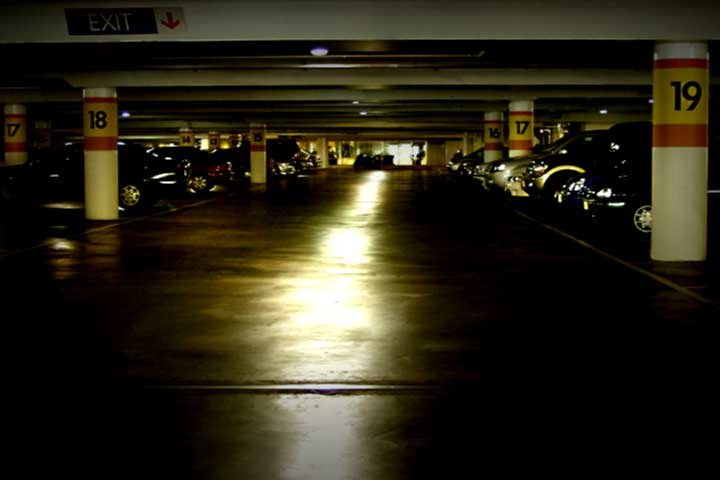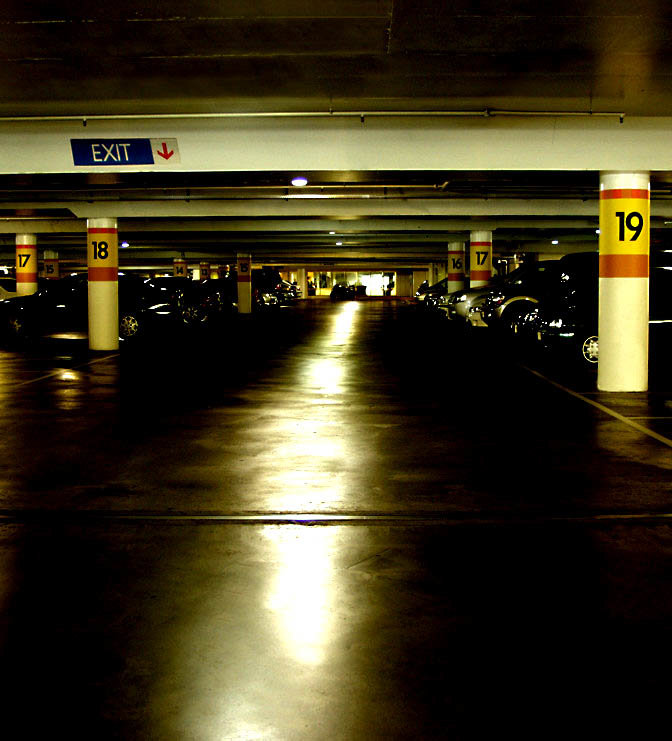
Robert Aldrich
Basic Member-
Posts
30 -
Joined
-
Last visited
About Robert Aldrich
- Birthday 05/15/1946
Profile Information
-
Occupation
Cinematographer
-
Location
Hollywood, CA
-
Specialties
Camera, but Writer/Director (aspiring to)
Contact Methods
-
Website URL
http://www.dailyrushes.com
-
Now you got me interested enough to try to "light" this in post. I used the Adobe Creative Suite CS2 Premiere Pro for this picture, I first used the "lighting effects" preset, using 3 "lights", (actually just brighter spots in the scene), and lowered the overall intensity. It didn't come out right, so I used the brightness/contrast effect to make it a little more effective. Still, I think it's much better, as John is obviously used to doing, to just light it right in the first place, you get so much finer control over the light levels that way. There is nothing more satisfying to a cinematographer than to have the editor say, "It looks great just the way it is!" and not have to do anything to your images in post. But if you are out of time or money, at least you can do something like this. The audience probably won't notice anything, but your filmmaker friends will, and that is the worst kind of criticism! Also, if I was doing the lighting in this scene, I'd try to at least put some highlights on the cars leave a large area of the image kind of dark and spooky, (depending on story material) and somehow darken the huge posts with their numbers, and of course, highlight the talent from the sides somehow, as he or she walked by. That would just be a shot of the talent walking down the middle, I have no idea what your story demands, but if there were other close/medium shots, reversed or whatever, I would then have a lot more creative control on lighting to show intensity of emotion or what ever is going on. Check out the American movies where garage scenes are taking place, and you can see this is the kind of thing they do, nothing new there. Robert
-
Thanks Christian, I come from that El Mariachi school of "do-it-for-almost-nothing", but boy, I'd sure like to have more resources some day! Still, if you don't have that, be creative instead! Robert
-
-
Affordable lighting substitutes
Robert Aldrich replied to Nick Norton's topic in Lighting for Film & Video
Watch the DVD commentary for El Mariachi, by Robert Rodriguez; he shot some of his interior scenes with nothing more than a single, humble hardware-store clamp-light. I personally think he should have used at least two, one for the background. In fact, his next movie, in my opinion, with a lot more money, looked terrible! Way overdone! -
Exposing correctly for video
Robert Aldrich replied to a topic in Students, New Filmmakers, Film Schools and Programs
I've had the same question in the past and it was only partially answered for me, but I realized just now, that the purpose of the gray card is to get a starting exposure for your shot, and then adjust for exposure on things in the shot that matter. (Of course, this is pretty much exactly what was just said above) People and things aren't 18% gray, after all. So tweak the image from that exposure, so people's faces/skin look good, and there aren't any blown-out areas that look bad. It's a trade-off sometimes, but you can't always control all the places the light is hitting and adjust that, so to save time/money you can adjust the exposure if you feel it doesn't degrade the image too much. And there is occasionally that time where you set your auto exposure and the image looks exactly the same as it does when you set everything manually...and everything looks gorgeous! Makes you proud! -
still shots from internet video
Robert Aldrich replied to Daniel Carruthers's topic in Please Critique My Work
Where is it? Strange...it only shows up in my reply. You need a hair person! Otherwise, looks good. -
Simple things crew people should know
Robert Aldrich replied to David Mullen ASC's topic in General Discussion
Set Etiquette Some of you may find this page interesting, and the rest of his site, for that matter. -
The first thing I would do is run a head cleaning tape through it. Be sure not to run it longer than five seconds, as it will heat up and fuse the junk that may be on them to the heads. Also, try a different tape. In the past when this has happened, there was something wrong with the tape itself or something clogging the heads, I had absolutely no time code or video. But usually you only get one of the heads clogged, giving you a striped image, four or five stripes running horizontally.
-
Find a weekend swap meet where they sell tools. You can get a battery-powered (or maybe it's plug in to 12V, can't recall) bank of about 20 to 40 white LEDs for something like 20-30 bucks. It's called a "Work Light"! I did a shoot in a graveyard with one LED flashlight that had something like 8 LEDs in it, and it was enough to fill-light an actor's face in a critical scene. (this was with a PD-150, so it's a lot more sensitive than a DVX-100 in low light)
-
Sounds like you're evolving your own low-budget alternative, just go ahead and do it...you don't need approval from anyone except local agencies, if they are even interested...
-
Call them up!
-
I saw the film last night on a 60 foot screen, and kept saying to myself, "What is wrong with this picture?" It seemed to me the resolution was down, I wondered the whole film if they'd shot it on HD or something, or if the focus puller wasn't doing his job. I looked and looked to see if I could find anything truly in focus. Most of the time I failed! Possibly it was the projection system there at a small theater in Pasadena. Could this have been a bad print? Also, to me, the colors were flat, dull. As for colors, maybe I'm spoiled by the more colorful Bond pictures.
-
I recently bought a gray card and haven't had a shoot yet to try it on, but thought this might be a good way to determine base exposure with this camera. True? I've often in the past gone with a touch of 70% IRE on faces, but found that to be unworkable unless the subject was a light-skinned caucasian... or, if shooting a black guy or other darker person, I'd find a caucasian nearby and expose for that, then go to the black guy and adjust for taste if he looked too dark. This is mostly on movie premieres where you have to be fast to get anything useable. As for white balance, I was at a concert last summer where we interviewed a about twenty bands all afternoon, one right after the other. We were in a shaded area on a very hot, bright day, so I white balanced on a white card for the shaded skylight, but the skin tones were all washed out and a very odd color to boot. I went to AWB later and they then looked normal! I found this odd because the white balance detector is in such an strange place on the camera, maybe the detector is seeing the ceiling, or both the ceiling and what's in front of the camera, I can't see what's in there. Any comment on that? Another odd thing I saw last week, I was on this shoot where a photographer did his shoot after me on the same subject. He took a gray card and white balanced on that! Does this make sense? Also, he had a neat little color chart about the size of the gray card which he held up and snapped right afterwards, to check his colors, and they looked good. I didn't get a chance to ask him where he got that color chart but it's about half the size of an 8" X 10" sheet of paper. Guess I can check some photo supply shops or something. Overall, I'm just trying to find a way to "get in the ballpark" video-wise in the field without having to drag along a monitor.
-
Hey Mike, What about this: If I don't have a calibrated monitor to shoot with, how can I best get in the ballpark with the camera in the field? Shoot a gray card first? White balance and watch zebra levels during shooting I would think, but do you think there are settings in the camera that would pretty well guarantee good color? Are the cameras pretty standard one to another? At different temperatures and humidity?
-
Well, at least you know what you know and don't insist you know something you don't know! And are willing to ask for comments to see what you're missing!



